Inside the Digital Chaos of the Modern Web
Browsing the web today means weaving through visual traps, intrusive extensions and endless data collection — this article helps you understand what’s going on, and how to stay in control.

Welcome to the Internet. Or maybe... welcome to its darker side. Today’s web, flooded with distractions and visual manipulation, turns every visit into an obstacle course. Behind this overstimulation lies a powerful attention economy. Even tools designed to protect us — like browser extensions — can turn against us. This article breaks down the flaws of the modern web and offers some ways to navigate it more consciously.
Browser Extensions — Useful Tools or Hidden Threats?
Ethics matter when it comes to building browser extensions.
Beyond their convenience, they raise fundamental questions about our responsibility to protect users’ privacy and ensure online safety. Useful, yes — but potentially harmful when poorly designed or misused.
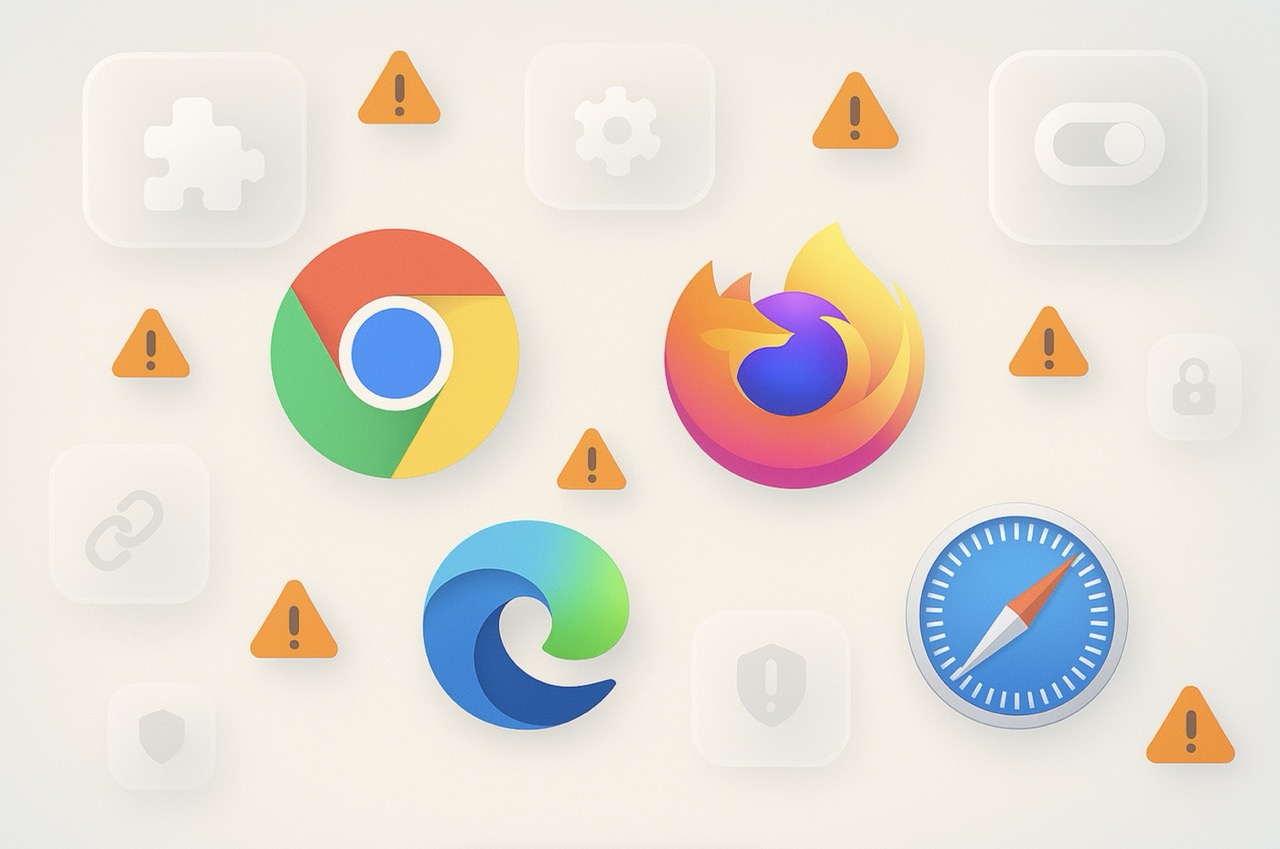
The Hidden Risks of Browser Extensions
Browser extensions can be incredibly useful — but they also come with some real dangers:
- Access to personal data: Some extensions can read your browsing history, cookies, or other sensitive information. That data is often used for targeted advertising, or worse, sold to third parties.
- Security vulnerabilities: Extensions can act as entry points for data theft, phishing attacks, or redirects to malicious sites. That’s why it’s crucial to keep your browser and extensions up to date — updates often patch known vulnerabilities.
- Performance issues: A poorly built extension can seriously slow down your browser. If an extension is hogging system resources, it might be badly coded — or intentionally invasive.
How Much Can Extensions Slow Down Your Browser?
Debugbear studied the performance impact of browser extensions on Chrome. Their analysis looked at the 1,000 most popular extensions — each with over a million installs.
Even delays of a few hundred milliseconds can seem minor, but when multiple extensions run simultaneously, the performance hit becomes much more noticeable and can seriously affect the user experience.
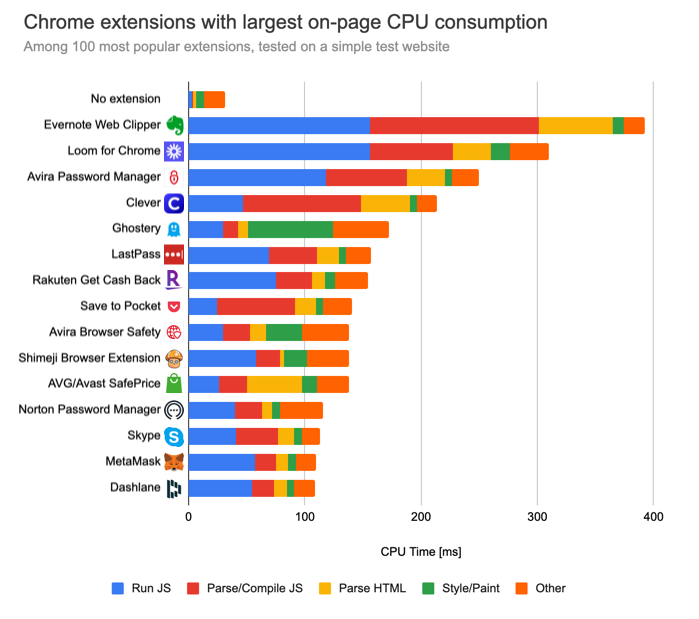
Not All Extensions Are Out to Get You
Not all browser extensions slow things down — some actually help.
Ad blockers, for example, can significantly improve performance.
A study compared CPU usage when visiting two news sites: one from The Independent (a lightweight page) and one from the Pittsburgh Post-Gazette (heavier content).
Without any ad blocker, CPU time per page reached 17.5 seconds. Even the least efficient blocker cut that down to 7.4 seconds — a 57% improvement.
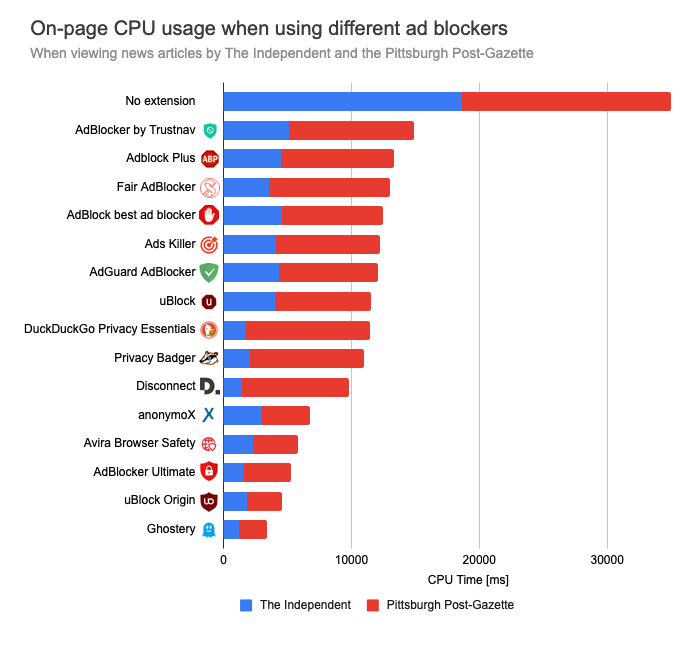
Personal Data — When You’re the Product
Protecting personal data has become a critical priority, enforced by regulations such as the GDPR, the CNIL, and Switzerland’s new nFADP. In this context, it’s time to rethink how online advertising works.
Many websites collect browsing data — often without users fully realizing it — to sell to third parties or use for targeted advertising. As the CNIL reminds us, this data must only be shared under clear and informed consent.
Some companies, like Facebook, have come under fire for sharing such data with commercial partners — a clear sign of how far some business models go in exploiting personal privacy. (Criticism of Facebook)
On the Internet, if it’s free, you are the product.
Yes, There’s a Way to Do Ads Without Cookies
Traditional advertising, based on tracking and personal data exploitation, is being challenged. Some companies are pioneering more ethical and privacy-friendly alternatives.
One standout example is Gumgum, which uses artificial intelligence to analyze the context of web pages and deliver contextual ads — without accessing personal data.
This approach both respects user privacy and keeps the ads relevant.
In other words, it shifts the question from “Which ad for this user?”
to “Which ad fits this page?”
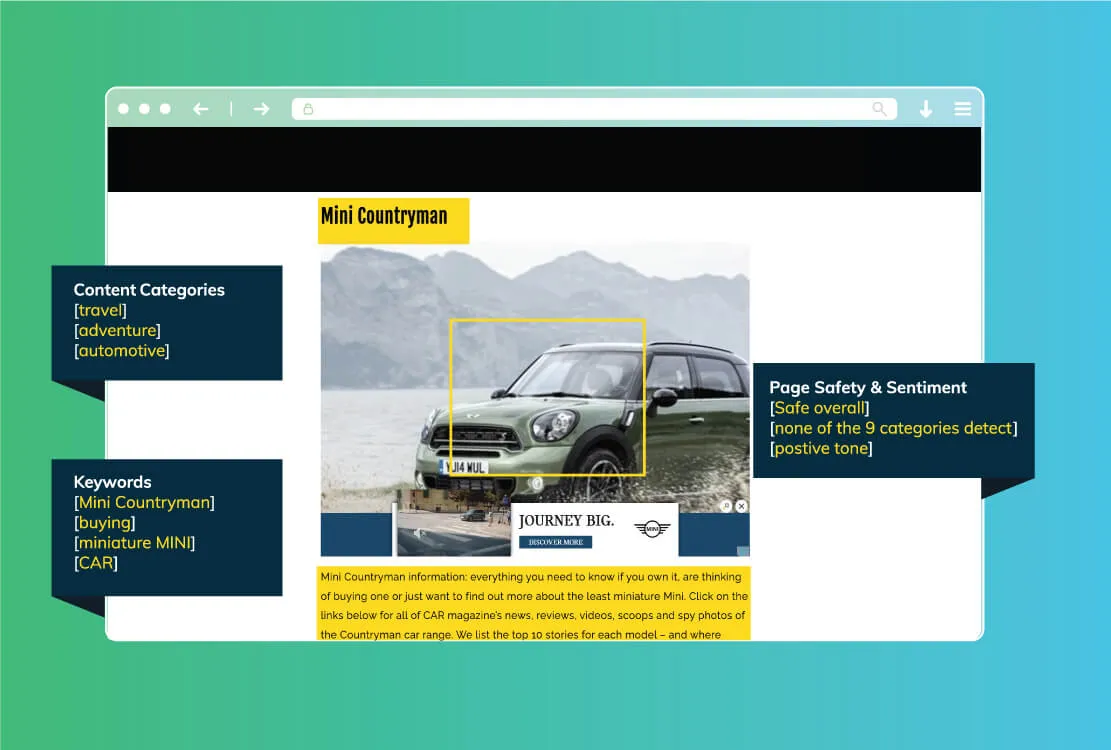
The Attention Economy — Fighting Back Against Overstimulation
To keep users online longer and increase engagement, many platforms rely on tactics known as Dark Patterns. These design tricks are built to manipulate users into taking actions they might not have chosen freely — often at the expense of their experience.
The Modern Web User Experience
Interactive prompts — like pop-ups, subscription requests, or push notifications — can be useful in the right context. But more often, they’re intrusive, distracting, and make browsing feel like a constant negotiation.
The goal is always the same: keep you on the page longer and get you to click, sign up, or interact.
Here’s what browsing looks like today:
- Open the site
- Accept cookies
- Decline newsletter signup
- Decline free trial offer
- Say no to push notifications
- Close live chat or help pop-up
- Decline app download suggestion
- Hunt for the “close” button
- Shut down an unexpected ad tab
- Pause autoplay video
- Decline feedback request
- Reject location tracking
- Change the language
- Start over
- …
- Remember why you came here in the first place
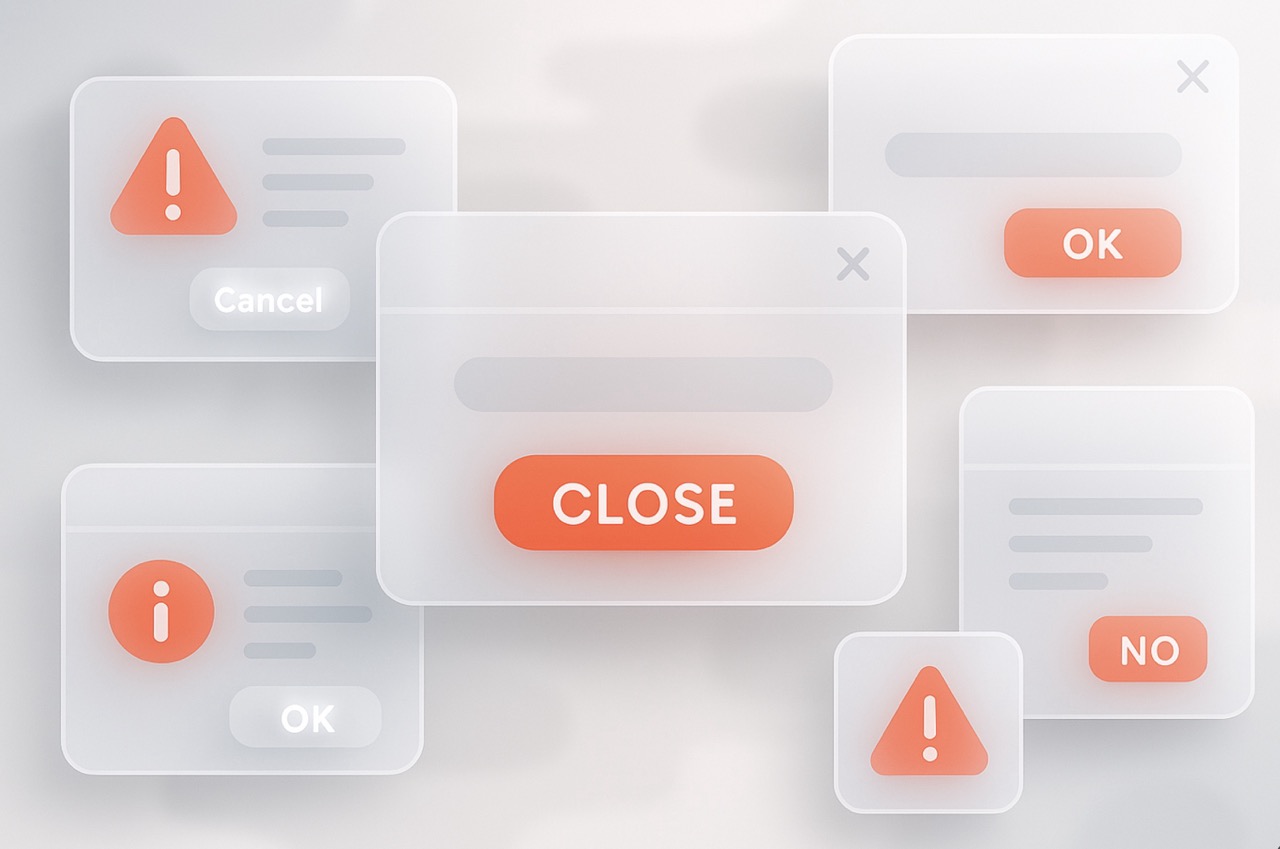
Welcome to the Internet.
Or at least... a darker corner of it — where user experience takes a back seat in favor of… what exactly? 🤷♂️
If we want a healthier, more responsible web, we need to minimize these manipulative tactics and focus on interactions that actually bring value to users — without frustrating or misleading them.
Click Economy = Digital Wellbeing
Every click matters. While interactive prompts can sometimes be helpful, they’re often seen as intrusive, disruptive, and frustrating. Here’s why users tend to reject them:
- Brand damage – Overuse of interactive elements can harm your site’s reputation and make it feel less trustworthy.
- Hard to close – Some pop-ups or prompts don’t offer a clear way out, leaving users confused or annoyed.
- Loss of trust – Getting hit with unexpected windows and requests feels aggressive — and undermines user confidence.
- Breaking immersion – Push notifications, subscription boxes, and chat pop-ups often interrupt reading and ruin the flow of the experience.
Web designers and developers have a responsibility to take a more ethical approach: reduce visual noise and ensure every element — even pop-ups — brings genuine value to the user.
The Web, with a Touch of Irony
No, it wasn’t better back in the day.
But remember the early Internet — with its flood of clunky, useless toolbars everywhere?
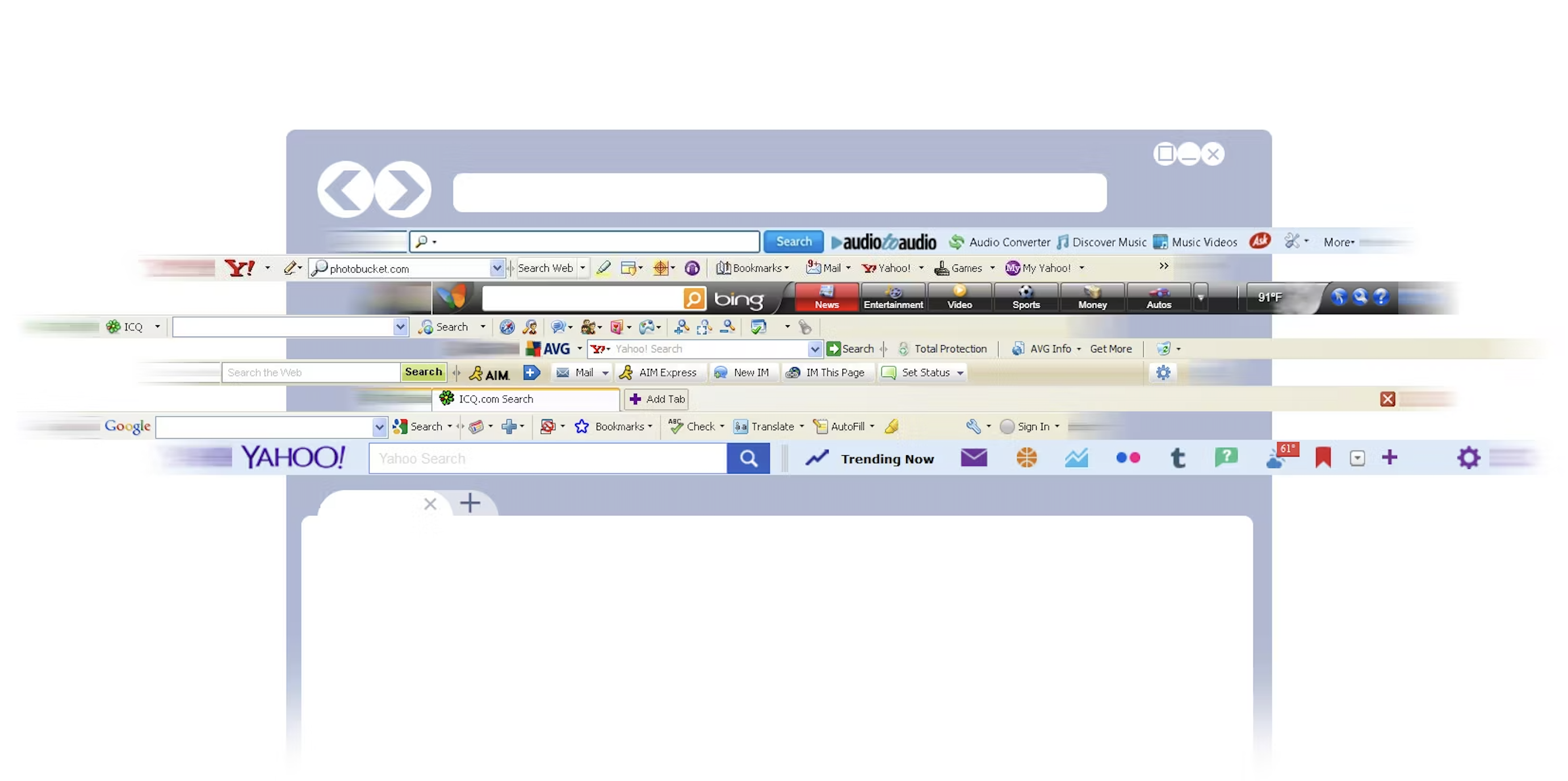
A game was actually created to show just how broken the web user experience can be — filled with pop-ups, banners, and all sorts of intrusive elements.
User Inyerface, developed by the agency Bagaar, captures this chaos perfectly.
How Do We Escape the Digital Hellscape?
Today’s web often feels like a digital minefield. Pop-ups, push notifications, aggressive prompts, invisible trackers — every click is an obstacle course.
But it doesn’t have to be this way. The modern web’s descent into overstimulation, shady extensions, and data exploitation is not a one-way street. There are ethical alternatives, responsible design practices, and tools built with real user respect in mind.
Developers, designers, and companies are already working toward a calmer, more human, and more inclusive web.
And it’s up to us — creators and users alike — to support that shift.
Hope isn’t lost.
It lives in every line of code, every design decision, and every mindful click.


